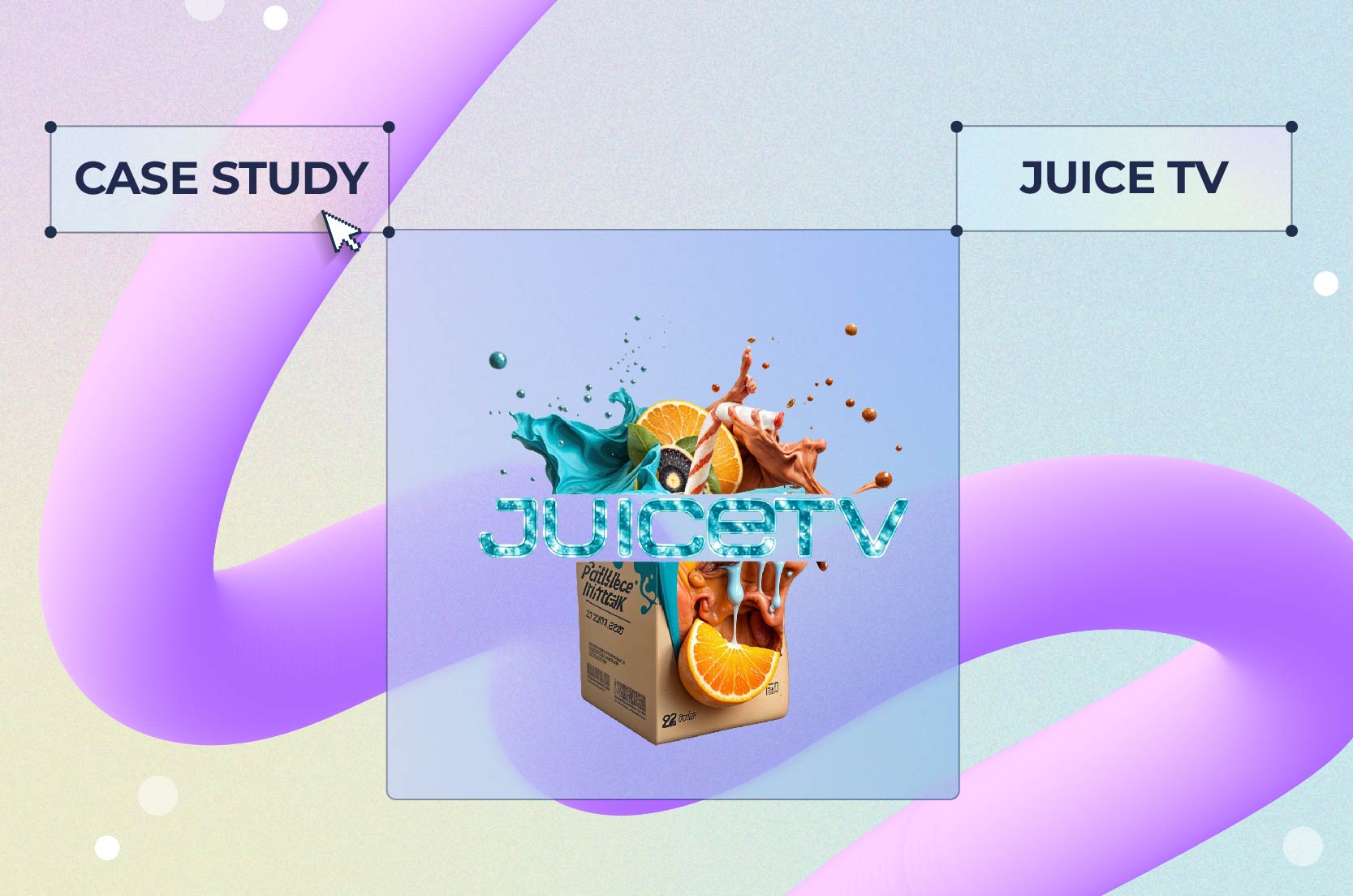
Case Studies
The importance of colors has been proven by many brands. We associate most of the famous brands with their logo color. For example, when we think of Netflix, we imagine red, Facebook is blue, Starbucks is green. These color associations have been imprinted in our minds through perfectly executed campaigns.
Luckily, choosing the perfect color combination for your logo shouldn’t be guesswork. Now, in this article, we’re going to help you choose your perfect logo color. How? We’ll speak about what to consider while choosing a logo color, its meaning, and will share some tips on logo color combinations.
So, let’s get the ball rolling!
As our brains process visuals more than 60,000 times better than text, when people think of your brand, chances are, your logo is the first thing they are going to recall. This is why it’s important to make the right impression on your target audience. By choosing the right colors for your brand logo, you can decide how you want them to remember you and create the desired brand image.
This is what Color Psychology studies. Do colors really affect our behavior? Or, is it just a myth? Studies show that the physiological and emotional effect of colors depends on different factors such as the customers’ past experiences, culture, natural environment, gender, nationality, etc.
This is why you need to define your target audience and align your color palette with your brand personality and the emotions you want to evoke. This knowledge can be useful to both large brand managers and small business owners.
Now that we have some primary knowledge of how color psychology works, let’s see the common logo color meanings with some examples:
To choose the perfect logo color or logo color combination, think about the associations and emotions that colors unconsciously create. By choosing the right color you will create the right perception of your brand.
When it comes to choosing between a single color or color combination you need to know that single-colored logos are more minimalistic and can be used on any background. Besides, the picked color will be easily remembered and associated with your brand identity.
Multi-colored logos are more complicated because the overall impression will depend on the color combination. You can match two or more colors, depending on what you want to achieve with it. So, how to get the right logo color combination?
Ready-to-use color palettes can be of great help for beginners or for those who don’t know how to match different colors.
Use natural color combinations that can be quite unique and beautiful. If you don’t know where to start, nature is the best place. Here’s an example of a color scheme:
There are many websites that provide well-chosen color combinations for any use. So, color palette libraries can help you find carefully selected combinations for your logo animators.
On other platforms, you can generate your own color schemes, to come up with something unique.
When you use our logo generator, you’ll see that it offers its own color combinations provided by professional designers. Here’s what it looks like:

Our editor gives you an opportunity to choose a ready-made palette, or change the color of each component of your logo manually.
The generated palettes may not have the power to reflect your brand identity, so in this case, it’s better to choose the color combination yourself
You’ve definitely heard about the color wheel, right? If you want to choose your logo colors manually, you must know the basics of color theory.
The primary colors of our wheel are red, blue, and yellow. After mixing these colors, we get secondary colors like orange, green, and violet. Colors have tints, which are created by mixing colors with white. When colors are mixed with black, they make up various shades.
Another way to categorize the colors is by dividing them into warm and cool colors. Warm colors are the ones like red, yellow, and orange. As the name suggests, they evoke feelings of warmth because they represent fire and the sun. Cool colors are blue, green, purple. These colors remind us of water or ice — elements that are cool by nature.
Now, let’s speak about the rules for matching colors. Again, we’ll have a look at the color wheel and will combine the colors based on it:

If you are new to picking a color combination for the design process, you can start with simple color combinations, because simplicity is essential in everything, including your brand and logo design. Keep it simple but powerful by choosing the colors that fully match your brand identity and voice.
Whether it’s a ready-to-use color palette or a custom color combination, your color choices must communicate your key message to your audience and be associated with your brand.
When we study different companies, we see the evolution of their logos as a part of their brand. Recently, Slack announced its logo redesign and the reasons behind it. One of the main changes was the logo color. Their previous logo had 11 different colors. As a result, it didn’t look good on different backgrounds. A simple color palette would be perfect for them. So, they came up with the current logo design.

Let’s get back to you.
In order to choose the right color for your logo, you need to consider different factors like the industry, your logo style, and how you want your brand to be perceived by people.
What are the main characteristics of a good logo? A good logo is unique, memorable, recognizable, appropriate, scalable, practical, and simple.
Of course, logo colors are of great importance, but they are a part of the whole concept and can’t be observed separately from the logo design itself. First, you need to come up with an idea you want to put behind your logo. What is it that you want your logo to express? Make up your mind about the meaning behind your logo and get to sketching.
Then, get the final version by polishing your design concepts and sketches.
Wisely picked colors or color combinations have a great impact on the overall perception of your logo design, so make sure you got it right. Following logo design trends can also give you some inspiration in the process.

You might have noticed that in different industries certain colors are dominant. One of the ways of choosing your logo and color schemes for your brand is to analyze your industry. People subconsciously associate companies that use specific colors with the industries they belong to. Below you can see various industries and the most popular colors used by industry representatives:
As you can see in the image above, the most used colors across the industries are blue, black, white, and red. And, if you take a look at each industry, you will see which color schemes dominate there, e.g. in the Fast Food Industry, the dominating logo colors are red, yellow, and white.
According to research, the popular marketing colors blue, black, white, and grey have classical associations, radiate friendliness, and trust to attract more clients.
In technology, the most used colors are blue, white, black, and red. These colors help companies look modern and innovative.
If you’re not satisfied with the colors used by the industry leaders and think that your brand needs something new and fresh, consider other color schemes based on your logo style and color psychology. In the long run, having a logo that is distinct from those of the competitors can help you stand out and differentiate yourself in the market. Just make sure to go with a distinct color that will be associated with your brand.
One of the main goals of any company is to build strong relationships with their customers and audience in general. To do so, you need to show what your brand stands for and your core values. And the right choice of your logo color can help to create the right perception of your brand in the minds of your audience.
Another factor of successful branding is consistency. Consistency helps to create certain associations with your brand. So, once you’ve picked the colors, incorporate them into everything that’s related to your company including but not limited to your logo design, website, and social media profiles.
Let’s take one of the famous brands as an example – Starbucks. You can see different shades of green on their website, social posts, and packaging. This is how they keep their brand consistent. While not going with one color everywhere, they came up with particular shades that differentiate them in the market from the competition.
When choosing colors schemes for your logo, you also need to consider where your logo will be used. Will it be used only online, or offline as well? The color system used for digital design is different from the color system you need to use in case you want to print business cards or flyers with your logo. If you don’t know how color works, you will get an inaccurate color representation of your logo. In design, there are two commonly used color systems: RGB and CMYK.
In digital design, the RGB color system is used. RGB stands for red, green, and blue. These are considered primary colors and their combinations produce other colors. This is why this system is called additive.
In print, the CMYK color system is used. It stands for Cyan, Magenta, Yellow, and Key(Black). CMYK is a subtractive color system because the printed inks subtract the brightness that is usually reflected.
When working on your logo, choose the right color system based on this information. It’s better to create two versions of the logo and know which file type to use when. This may seem like additional work, however, this extra step will make sure that your logo looks perfect both online and offline. In case you are confused as to which logo file type to use for print and for digital, we cover it extensively in our article.
If you are looking to create a logo design for a multinational company, you also need to be aware of the symbolic meaning of the colors you choose. Different colors may represent different feelings and evoke specific emotions across countries and cultures.
For example, in Western cultures, white is often a symbol of purity and innocence. Meanwhile, in Eastern countries, it is the color of death. Or take the color red: in India, it symbolized joy and purity, while in many African countries, it suggests aggression and death. Taking this into account will result in better choices when it comes to your brand colors, and in the long run, can even save you disappointment and additional work.
Conclusion
If you want to design your logo yourself, then you need to learn more about how to do it right. One of the main characteristics of a powerful logo is the color combination it consists of. In this article, we’ve shared some useful tips on how to choose your logo colors based on your industry and brand perception, how to combine different colors by using the color wheel, and how to find ready-to-use color schemes. Now, it’s time for you to use this knowledge and create your logo. Find some inspiration by going through the large selection of customizable logo presets in different categories, and start creating!
Article by: Renderforest Staff
Dive into our Forestblog of exclusive interviews, handy tutorials and interesting articles published every week!
Read all posts by Renderforest Staff










 Source: Visme
Source: Visme Source: Color Hunt
Source: Color Hunt
 Source: Canva
Source: Canva Source: 99designs
Source: 99designs Source: 99designs
Source: 99designs Source: digitalprinting.co.uk
Source: digitalprinting.co.uk